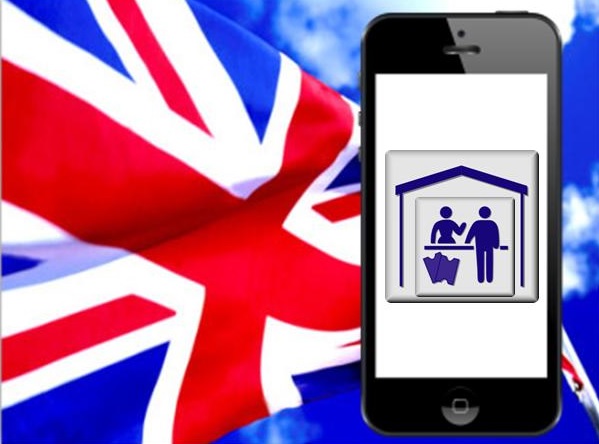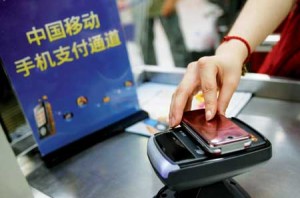Denny |
November 22, 2016
Americans appear to be more hesitant to use their smartphones to make shopping purchases.
The most recent data from tech firm Ve Interactive has shown that mobile commerce adoption is greater in the U.K. than in the U.S. When it comes to online shopping, British shoppers seem to look to their devices more to make their purchase than Americans.
The m-commerce trends data was the result of a data analysis from more than 4,000 online companies.
The data showed that mobile commerce adoption has been greater in the United Kingdom to the point that it has surpassed desktop. U.K. shoppers now prefer to buy products and services using their smartphones than on their laptops and desktops. Mobile purchases now make up 58.7 percent of purchases in the United Kingdom. Comparatively, 54.6 percent of Americans are still using their desktops or laptops to buy. In the United States, mobile devices haven’t quite made it into the top spot yet.
This has gone against many mobile commerce adoption predictions made in the United States.
 Predictions about the takeover of mobile shopping in the U.S. have been made for some time. That said, the reality has been much slower to develop. While growth has been quite strong, the data from Ve Interactive has shown that U.K. m-commerce has been maturing much more quickly than it has in the U.S.
Predictions about the takeover of mobile shopping in the U.S. have been made for some time. That said, the reality has been much slower to develop. While growth has been quite strong, the data from Ve Interactive has shown that U.K. m-commerce has been maturing much more quickly than it has in the U.S.
There have been a number of theories to explain why the trend is notably stronger in one market than the other. Among them, one of the top considerations has been the simple fact that a larger percentage of the British population has smartphones than the American population. At the same time, the percentage of people in the U.K. who have laptops and desktops is falling at a faster rate.
Equally, smartphone adoption was faster earlier in the U.K. than in the U.S. This means that among the people who do have smartphones, the British have had a longer period of time in which to become accustomed to using their devices for a spectrum of daily activities.
That said, the official start to the holiday shopping season in the United States is nearly here. Many industry analysts expect that this time will be defining for mobile commerce adoption. It could soon be that the trends will see a significant shift in the U.S. as consumers begin purchasing in greater amounts.
In China nearly two thirds of all shoppers are now regularly using wallet apps to complete purchase transactions.
A new report revealed that almost two out of every three Chinese consumers use smartphone mobile payments regularly. The report was aimed at better understanding the country’s internet development. China Internet Network Information Center conducted the study and revealed the results of its data analysis.
The report showed 64.5 percent of Chinese smartphone owners use mobile payments to buy products.
That figure represents about 424.5 million people in China. These figures are as up to date as June 2016, which represents some very recent insight into this smartphone mobile payments trend. It also shows an increase in usage of 7 percent since December.
Aside from mobile wallet use, the report on the study also stated that there are 710 million internet users in China. This is nearly double the entire population of the United States. An estimated 656 million internet users connect to it via mobile devices.
The rapid growth in smartphone mobile payments is credited to the quick development of the necessary infrastructure.
 The ecosystem needed in order to implement mobile wallets was adopted very swiftly in China, said the report. Recently, Samsung Pay and Apple pay have also entered the mobile payments market in China. This has given the sector’s growth a shot in the arm.
The ecosystem needed in order to implement mobile wallets was adopted very swiftly in China, said the report. Recently, Samsung Pay and Apple pay have also entered the mobile payments market in China. This has given the sector’s growth a shot in the arm.
A rising number of manufacturers such as Xiaomi and Huawei launch NFC technology enabled smartphones. The result is a greater compatibility with many mobile payments tech requirements. Near field communication is the technology behind many large mobile wallets such as Apple Pay. The more consumers have NFC enabled smartphones, the greater the ability to actually use the mobile payment apps.
According to IDC research firm senior analyst, Michael Yeo, “Mobile payments have become a part of life in China now, driven by a combination of factors including e-commerce and mobile commerce, and services such as taxi-hailing apps.”
Yeo also explained that the success of smartphone mobile payments is as great as it is as the Chinese market is less influenced by legacy payment methods. Credit cards and banking cards are not as ingrained in Chinese society. Moreover, many people in the country use the internet exclusively over mobile devices.
 Predictions about the takeover of mobile shopping in the U.S. have been made for some time. That said, the reality has been much slower to develop. While growth has been quite strong, the data from Ve Interactive has shown that U.K. m-commerce has been maturing much more quickly than it has in the U.S.
Predictions about the takeover of mobile shopping in the U.S. have been made for some time. That said, the reality has been much slower to develop. While growth has been quite strong, the data from Ve Interactive has shown that U.K. m-commerce has been maturing much more quickly than it has in the U.S.
 The ecosystem needed in order to implement mobile wallets was adopted very swiftly in China, said the report. Recently, Samsung Pay and
The ecosystem needed in order to implement mobile wallets was adopted very swiftly in China, said the report. Recently, Samsung Pay and 